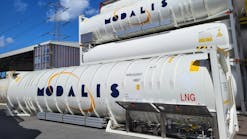ILTA: Terminal industry preparing for active hurricane season
The International Liquid Terminals Association (ILTA) says its members are prepared for the hurricane season, which the National Oceanic and Atmospheric Administration’s Climate Prediction Center forecasts as more active than normal, with drills, emergency preparedness plans and ongoing communications with government, emergency response and industry partners.
“The industry takes hurricanes very seriously,” said Kathryn Clay, ILTA president. “Our priorities are protecting our workers, the environment, and our neighbors in our communities. At the same time, we work to ensure the best possible operations even when hurricanes disrupt other components of the supply chains.”
Terminals store a wide variety of products, including chemicals, crude oil, petroleum products, renewable fuels, asphalt, animal fats and oils, vegetable oils, molasses and fertilizers.
ILTA members work with federal, state and local first responders and government officials to promote safety before and restore normal operations following a storm, the association said. Because no two storms are alike, ILTA members routinely participate in exercises and training to prepare and respond to natural disasters. It is industry practice to prepare for a storm in stages at 96 hours, 72 hours and 48 hours prior to hurricane impact to ensure that terminals are safe and secured. Post-storm checklists help assess potential damage, alert local, state and federal authorities of damage and resume operations—or help find service alternatives.
“Many terminals are located along ocean waterways, both in the Gulf of Mexico and along the Atlantic Coast, where hurricanes are prevalent,” Clay noted. “Our members also work with our maritime partners to not only to secure marine terminal operations, but to ensure the safety of maritime workers.”
NOAA’s Climate Prediction Center, a division of the National Weather Service, on May 21 forecasted a 60% chance of a more active than normal Atlantic hurricane season in 2020, a 30% chance of a near-normal season and only a 10% chance of a below-normal season. The center predicted a likely range of 13 to 19 named storms (winds of 39 mph or higher), of which six to 10 could become hurricanes (winds of 74 mph or higher), including three to six major hurricanes (Category 3, 4 or 5; with winds of 111 mph or higher).
The Atlantic hurricane season runs June 1 to Nov 30.









